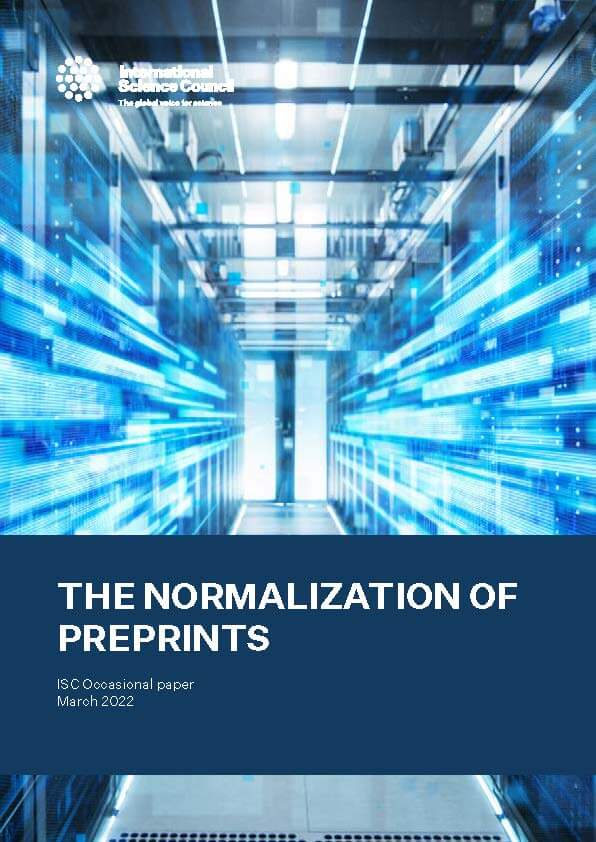
The August 2022 announcement from the U.S. Office of Science and Technology Policy (OSTP) has significantly boosted the push for open access. This new policy, also known as the Nelson memo, mandates all federally funded research to be made publicly accessible without delay and expects all agencies to implement it by the end of 2025.
However, the memo does not specify the routes for achieving open access.
There is a widespread fear that dominant strategies by the big five for-profit publishers will make the author-pays open access model the prevailing one, albeit the concerns of exclusions of the Global South researchers.
The hopes, however, come from the European Union bloc. In a recent announcement (early May 2023), the EU expressed support for the open-access publishing models without publication charges borne by authors. On 23 May, the Council of EU adopted conclusions on the ‘high quality, transparent, open, trustworthy and equitable scholarly publishing’ and highlighted the need for a non-profit, open access publishing model with no costs for authors or readers. The conclusions also emphasize the importance of pilot initiatives like Open Research Europe for ‘creating a large-scale open access research publishing service’.
These two recent radical developments in the science policy space are expected to accelerate the expansion of open-access publication and could even lead to a complete shift towards open access models. While some may doubt the possible outcome, the history of scientific publishing has shown that the transition to open access has been a reality. Rapid in some fields and met with resistance in others; however, the push for open access has won over the resistance to change.

Opening the record of science: making scholarly publishing work for science in the digital era
This 2021 report proposes series of normative principles that should underlie the operation of scientific and scholarly publishing; describes the current publishing landscape and its trajectory of evolution; analyses the extent to which the principles are observed in practice; and identifies problematic issues that need to be addressed in realizing those principles.
Uncovering the Milestones of Scientific Publishing in the Past Three Decades
Scientific publishing has undergone significant changes in the past three decades.
Advancement in technology is the primary factor behind the shift, which brought in other transitions, such as an increased emphasis on open access and diversities in publishing models. The traditional subscription-based publishing model focusing on journal prestige has been challenged by new forms of dissemination that prioritize accessibility and transparency. In this essay, I discuss some of the key inclusions and changes in the scientific ecosystem that have taken place over the times that shaped the current conversations.
The Emergence of arXiv
One of the milestone developments is arXiv, founded in 1991 as an online repository for preprints in physics, gained popularity and expanded to other fields such as mathematics, computer science, and computational biology. arXiv introduced the idea of early sharing of research by allowing researchers openly share their findings and receive feedback from peers before peer-reviewing through the traditional journal routes that usually take months, if not years, in some disciplines.
The Open Access Movement and its Impact on Scientific Publishing
The advent of the internet and digital technologies prompted another call for action moment in the scientific publishing-the open access movement. Open access has transformed scientific publishing by promoting the idea of free and unrestricted access to scholarly research. One of the earliest and major milestones was the Budapest Open Access Initiative (BOAI) in 2002, which defined open access as free and unrestricted online access to peer-reviewed scholarly research.
BOAI presented two key options: self-archiving, whereby the researchers are encouraged to deposit the final accepted version of their articles in publicly accessible repositories. The second is new generations of open access journals that are freely accessible to everyone without subscribing. These two ideas are slowly but steadily changing the scientific publication space. Globally, most research funding agencies have mandated open access (now called green open access) through the first pathway mentioned in BOAI. Wherein the journal publishers started imposing an embargo period of 1-2 years on posting the final version of a paper in repositories.
The other significant development is the inception of open-access journals; however, the most dominant model is where authors pay an article processing charge (APC) to publish their research, now called gold open access. BioMed Central, a for-profit publisher, started some of the early APC-based open-access journals in 2000, providing a platform for researchers to publish their work and making it accessible to everyone without the subscription barriers of traditional publishing.
The Public Library of Science (PLOS) pioneered this open access publishing model by launching PLOS Biology in 2003, followed by PLOS Medicine in 2004 and PLOS One in 2006. Another significant push toward open access came from ‘cOAlition S’ or Plan S, which includes funders such as European Commission, Bill and Melinda Gates Foundation, and the Wellcome Trust. Plan S, starting from 2021, requires all research articles funded by participating organizations to be published in compliant journals or platforms that allow immediate open access.
Unintended Consequences: The Hovering Shadow of APC and Predatory Publishing
The call for open access allowed the publishers to flip their publication models to gold open access journals. The APCs of these journals are often extravagant and, in general, high for most researchers worldwide; practically, reading paywalls are now replaced by author paywalls. Another unintended consequence of this model is the enormous growth of predatory publishing.
Predatory journals are a serious concern worldwide. Predatory journals and publishers are those that prioritize their self-interests over the quality of scholarship. They use unethical practices, dubious editorial standards and publication policies, lack transparency and aggressively solicit manuscripts. Recently, in March 2023, Clarivate announced the delisting of 50 journals including the largest journal in the world, from the Web of Science core collection. This is just the tip of the iceberg where unscrupulous journals are concerned.
Rise of Alternatives
The next notable change in scientific publishing has been the wider adoption of preprints, especially during the Covid-19 pandemic. Other popular preprint servers, in addition to arXiv, include bioRxiv, medRxiv, Research Square, and SocRxiv. Apart from Research Square, which is owned by Springer-Nature, others are managed by universities or scholarly societies.
The other two noteworthy developments are preprints with open peer review (post-publication peer review) as the default model for research articles and research assessment sans the journal title/prestige. One of the prominent and widely read journals in Biological Sciences eLife, announced a complete overhauled of its publication model. The journal will no longer make accept or reject decisions at the end of the peer-review process. Instead, all papers that get approval from the eLife editorial team will be published on the eLife website as Reviewed Preprints, accompanied by an assessment and open reviews provided by peer reviewers. Authors can include a response to the reviews, and versions of the record will be available.
Quality over Quantity and Prestige: The Importance of Responsible Research Assessment
The call for changing the research assessment practices independent of journal impact factors and other location-based indicators of quality, including h-index and citations, is growing strongly. DORA Declaration (2012), the Leiden Manifesto (2015), Hong Kong Principles (2019), and The EU Agreement on Research Assessment (2022) are all aimed at reforming the assessment criteria and the adoption of best practices that emphasize the significance and influence of various research outputs and outcomes.
Many funding agencies and universities globally are adopting responsible research assessment practices looking at a broad and enduring impact.
Adapting to the Changing Landscape of Scholarly Communication
The rise of digital publishing has also led to changes in how scientific articles are presented. Most journals now offer online-only formats, allowing for elements such as videos, interactive figures, and datasets to be included in articles.
This has enabled researchers to communicate their findings more effectively and made it easier for readers to engage with research articles. There is a growing concern over reproducibility and transparency in scientific research, which has led to the development of data-sharing policies that require authors to provide detailed data, both raw and curated, through data repositories. Some of the popular data repositories are Zenodo, Figshare, and Dryad.
The rise of open science, encompassing practices such as open access, peer-reviewed preprints, data sharing through repositories, new peer-review models, and responsible research assessment, have all contributed to a more open and dynamic scientific ecosystem. As the ecosystem continues to evolve, we will see further changes in how research is disseminated and evaluated.

The normalization of preprints
This ISC Occasional Paper addresses the history of the preprint, its advantages and potential disadvantages, and concludes with some recommendations for how the growing acceptance of preprint posting should be handled within academia, and the changes in cultural norms that this entails.
Image by Chris Barbalis on Unsplash.